When Bungendore's Royal Hotel recently reopened its doors after several years of extensive renovations, there was much celebration.
And why not, owner and former Wallaby Richard Harry didn't hold back in restoring the 1883 Gibraltar Street landmark. It was much more than a lick of paint and a few new bar stools - Richard masterminded a high-end heritage-sensitive rebuild from the inside out.
However, when the doors flung open, something was missing. Something small, but nonetheless a much-loved part of the historic drinking hole - a black and white photo featuring a group of men drinking at the pub in 1949.
The photo, thought to have been taken by a travelling photographer, gained notoriety shortly after it was taken, framed, and hung on the wall of the front bar. And for good reason.
If you look closely, at the back of the photo is a stranger, almost in shadow form. No one recalled him being there when the photo was taken and despite the best efforts of the baffled townsfolk, no one could identify him. He fast became known as the Ghost of the Royal Hotel.
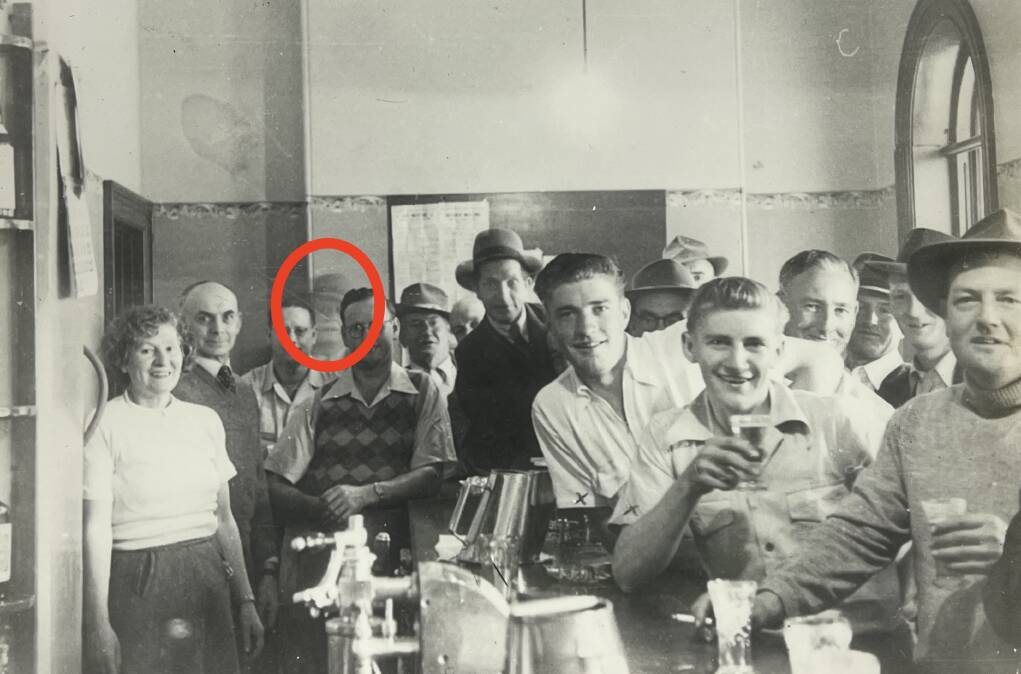
With the advent of the internet, the image was closely scrutinised by international paranormal afficionados. In fact, one website, The Paranormal Chronicles, recently named it in the Top 101 ghost photos of all time.
Earlier this week when I drove out to Bungendore to check out the pub's refurbishments, the photo was the first thing I looked for. But it wasn't there! The barmaid told me it had been misplaced, possibly lost during renovations.
Not surprisingly I'm not the only one to miss it. "Many patrons have come in looking for it," reveals Jodie Rixon, the events manager.
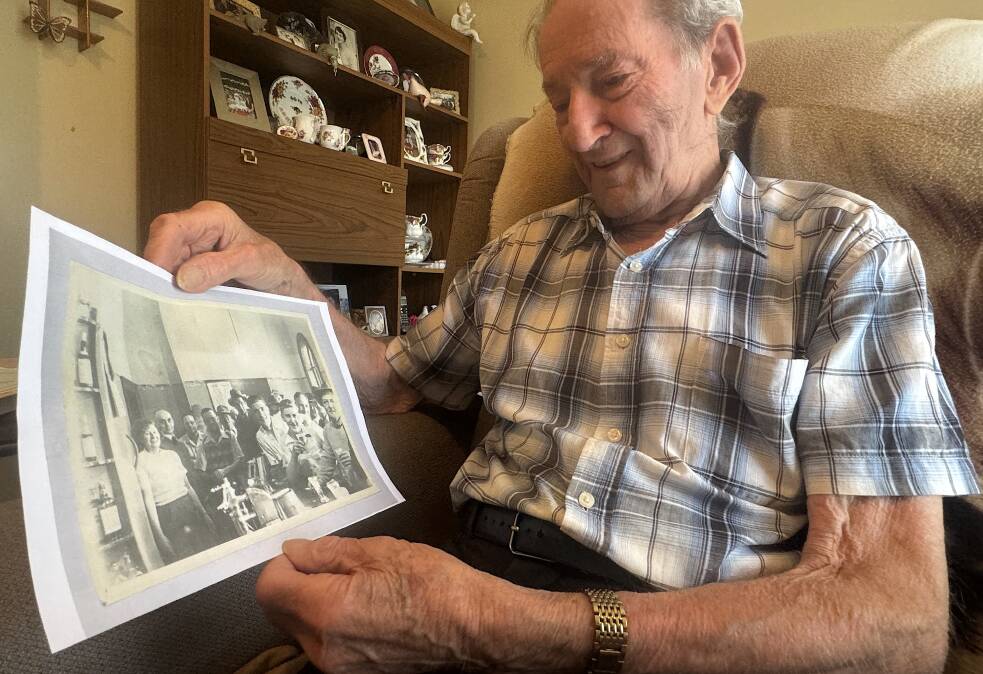
One of those is nonagenarian Gordon McKie of Red Hill. Gordon is one of the drinkers in the photo. Possibly the last one still alive.
Gordon was just 17 at the time the photo was taken and working in Bungendore as a mechanic at Gardiners Garage. He can't recall the exact details of the day the photo was taken, but he's "pretty sure" it would have been on a Saturday around midday.
"That's when we all headed to the pub," recalls Gordon, who is pictured at right with his elbow on the bar, enjoying a cold one with his late brother Fred (immediately behind him).
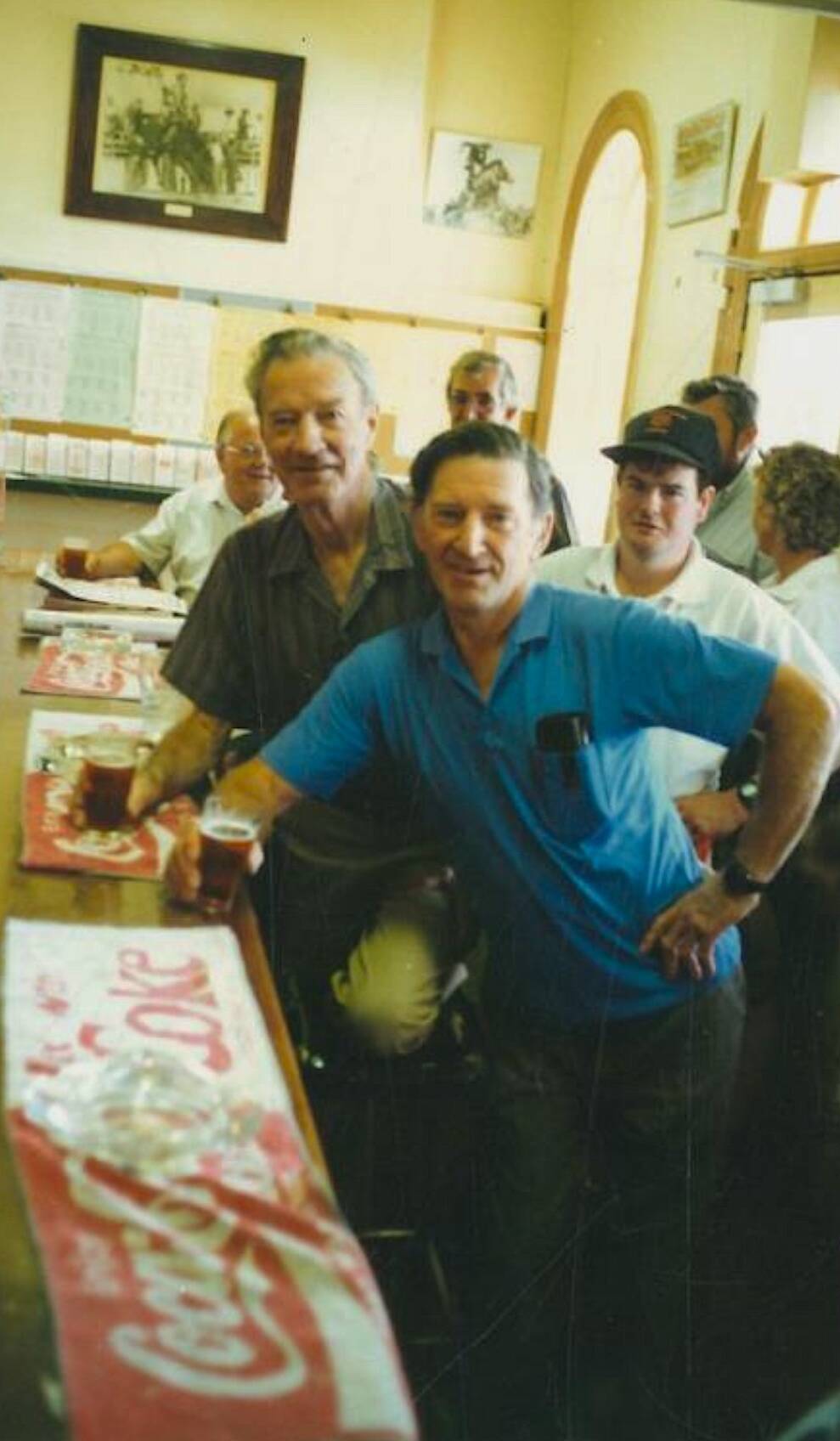
"It would have been a Tooheys," explains Gordon, adding "the other pub in town, Lake George Hotel, was a bit more elite, cockies and shop owners went there to drink Reschs, but true workers and all the ordinary people went to the Royal to drink Tooheys."
Despite 75 years passing since the infamous photo was taken, Gordon can still reel off the names of everyone in the bar that day. Everyone, except, of course, the "ghost".
"That's the Brummels who ran the pub, on the left," says Gordon. "The fella in the middle with the dark coat, hat and tie is bootmaker Bernie Heath - he once repaired a pair of my shoes ... He was only about 5-foot tall, apparently the photographer asked him to sit on the stool.
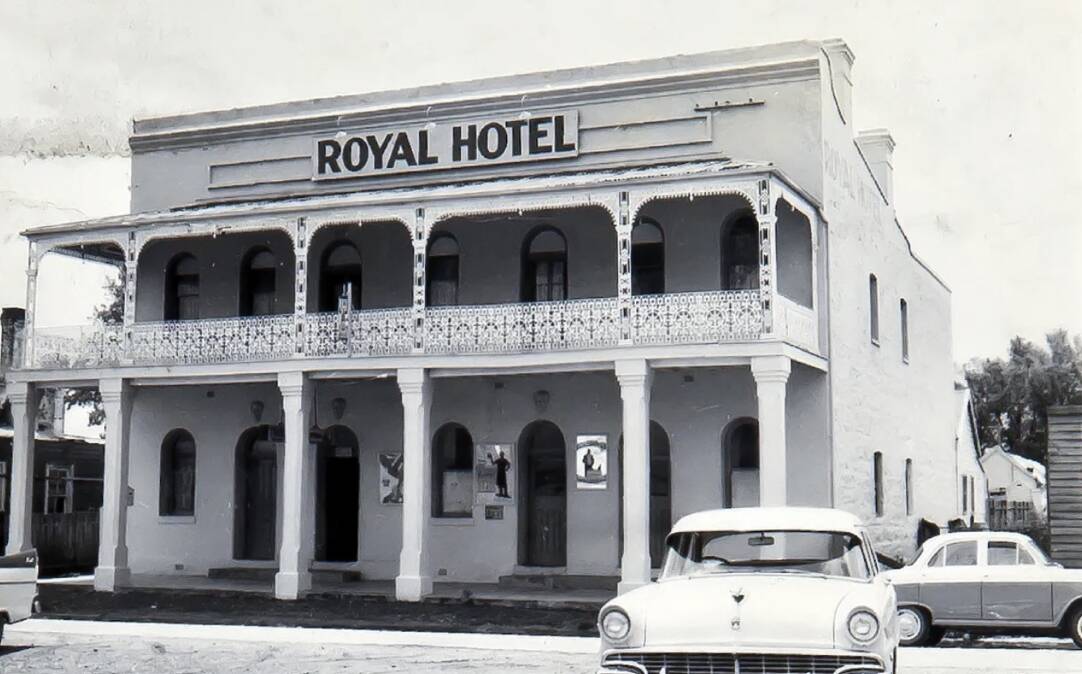
"For years, every time I walked into the pub someone asked me about the photo," says Gordon, who admits that talking about it "also brings back memories of growing up in Bungendore".
"As a seven-year-old I especially remember playing in the gully near our house on the corner of Butmaroo and Rutledge Streets when my uncle ran across the road and told me to go and get my dad because the war (World War II) had just started," he recalls.
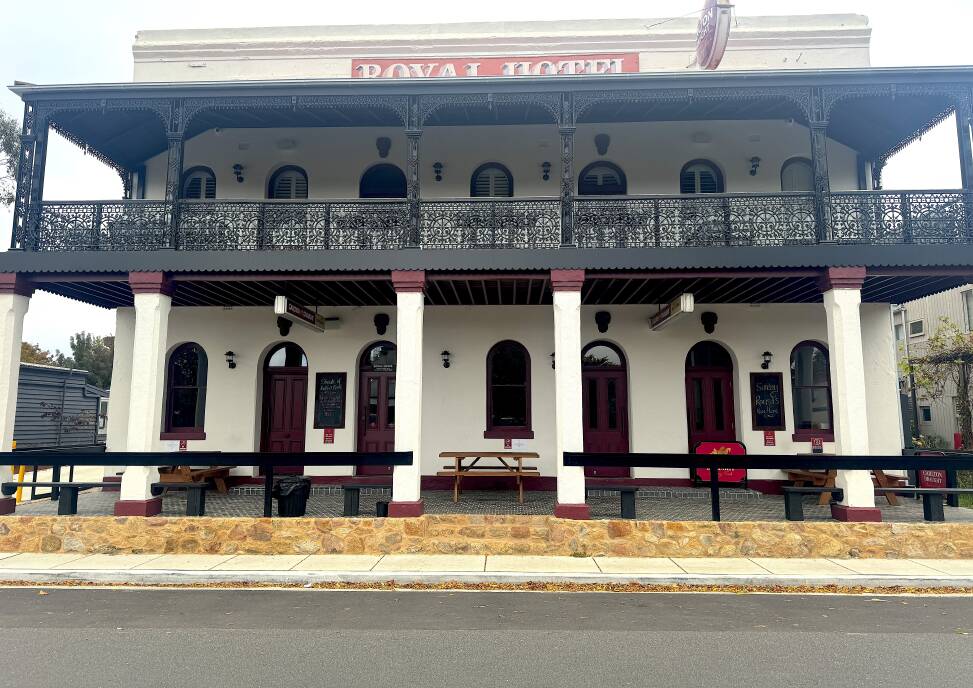
Then there's the time Gordon and Fred set off to walk to Collector and back with their dog, via a dry Lake George.
"I remember mum saying, 'You boys, there are wells around the lake, you don't want to fall into one'.
And did they make it?
"Let's just say it was a lot further than it looked," laughs Gordon. Indeed, it's about a 40-kilometre return trek.
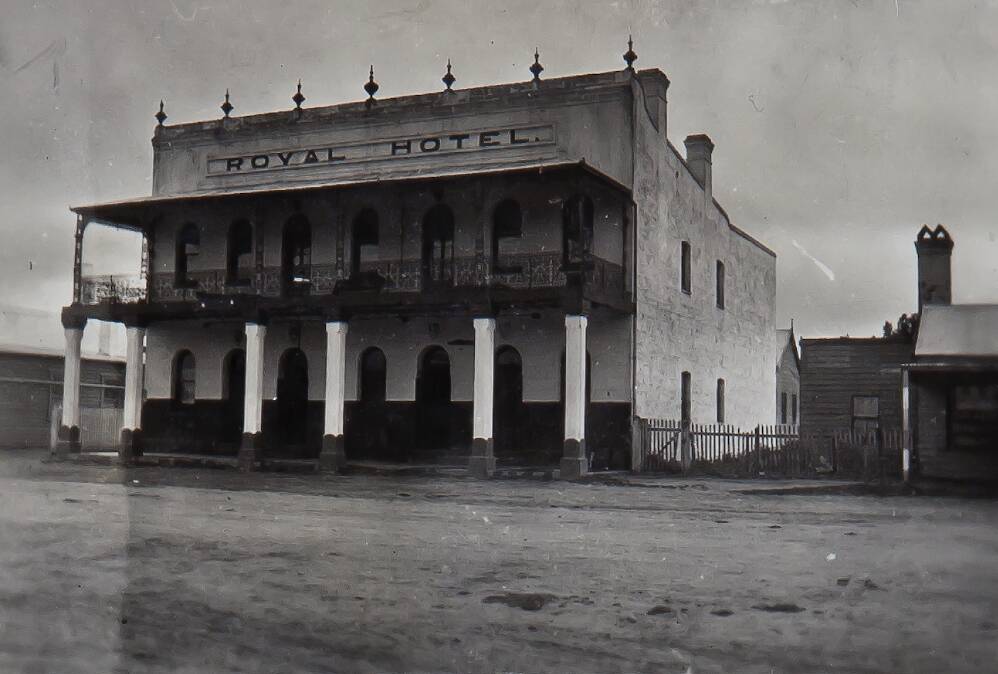
One trip Gordon often made was to the cemetery where he'd help his dad, a local carpenter-cum-undertaker, to dig graves. "Sometimes it was hard to get to the necessary depth as we kept hitting rock," he says.
Gordon also regularly made the journey to Queanbeyan as part of the Royal Hotel's dart team in the 1950s.
"I'll never forget the day I needed a 32 to beat reigning champion Billy Ross," recalls Gordon, triumphantly adding, "I threw a double 16 and the Caltex Cup was all ours."
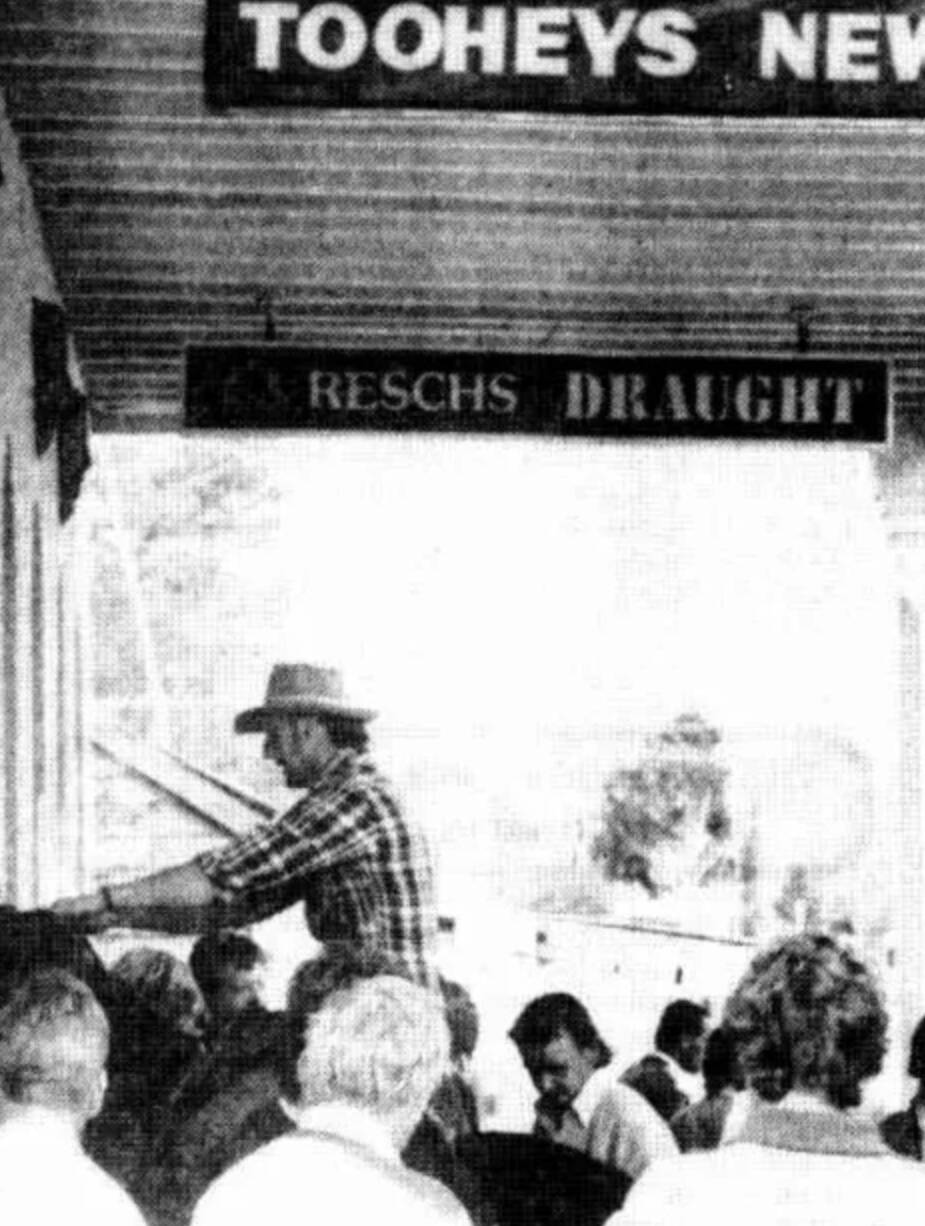
"In fact, that was the last time we competed, so that cup must still be kicking around Bungendore somewhere," he asserts, adding "hopefully it hasn't vanished like the ghost photo".
Although Gordon left Bungendore in 1959, since then he has beaten a well-worn path to his old stomping ground to enjoy a drink with mates and family.
"If only I knew who the ghost was," he says. "In all that time, I've never been able to work it out."
Sure, it may have been a double exposure or even a random 1949 photo bomber, but the photograph has become synonymous with the Royal Hotel.
Thankfully copies of the photo have been found stashed away in family albums, and I'm reliably informed there are plans for it to hang in the bar once again.
I can hardly wait.
But not as much as Gordon.
Publican's presence still larger than life
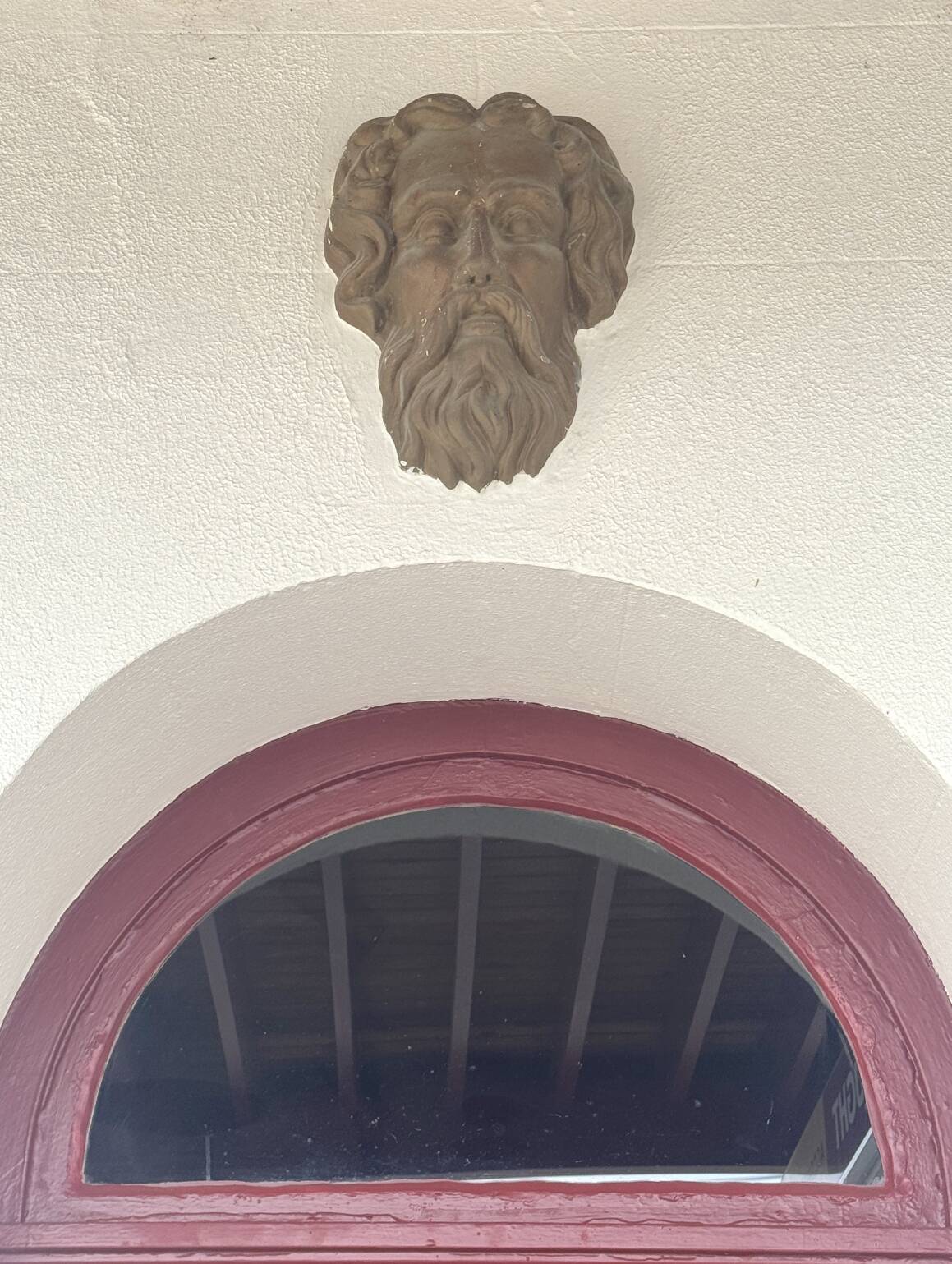
While the identity of the 1949 photo-bombing "phantom" may never be determined, the presence of John Joseph McMahon - known as Jack - the pub's first licensee, is still spotted at the pub, just not in ghostly form.
On the pub's imposing facade are several life-size face casts of Jack who ran the pub from 1882 until his death, aged 63, in 1889.
Not that many locals, nor staff, know it's him. "Oh, I thought it must have been a depiction of a former King," gushed one bar staffer when I recently asked about the origins of the casts.
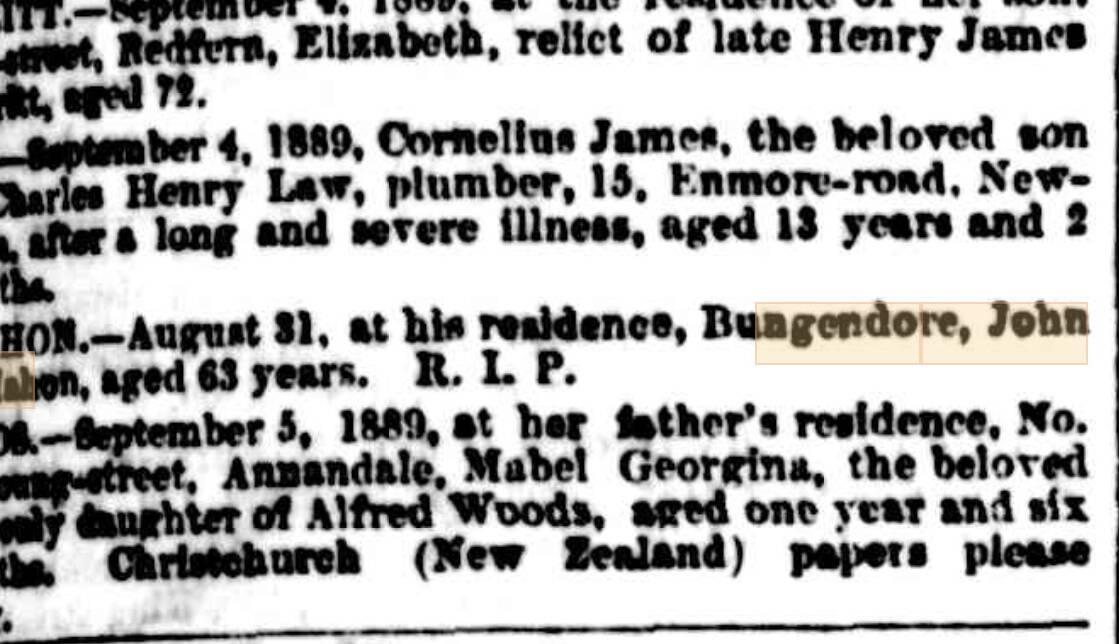
While some reports suggest it was Jack who had life-sized casts of himself crafted and erected on both the ground and top floors, others suggest the casts were morbidly made after his death - similar in a way to death masks made of criminals like Ned Kelly, and also these of prominent scientists on display in the foyer of the former Institute of Anatomy in Canberra (now the National Film and Sound Archive).
But that's not where the mystery surrounding Jack stops. If you wander over to the Bungendore Cemetery, at first glance his grave seems like any other, complete with standard tombstone which also marks the grave of his 22-year-old daughter who died just six months before Jack.
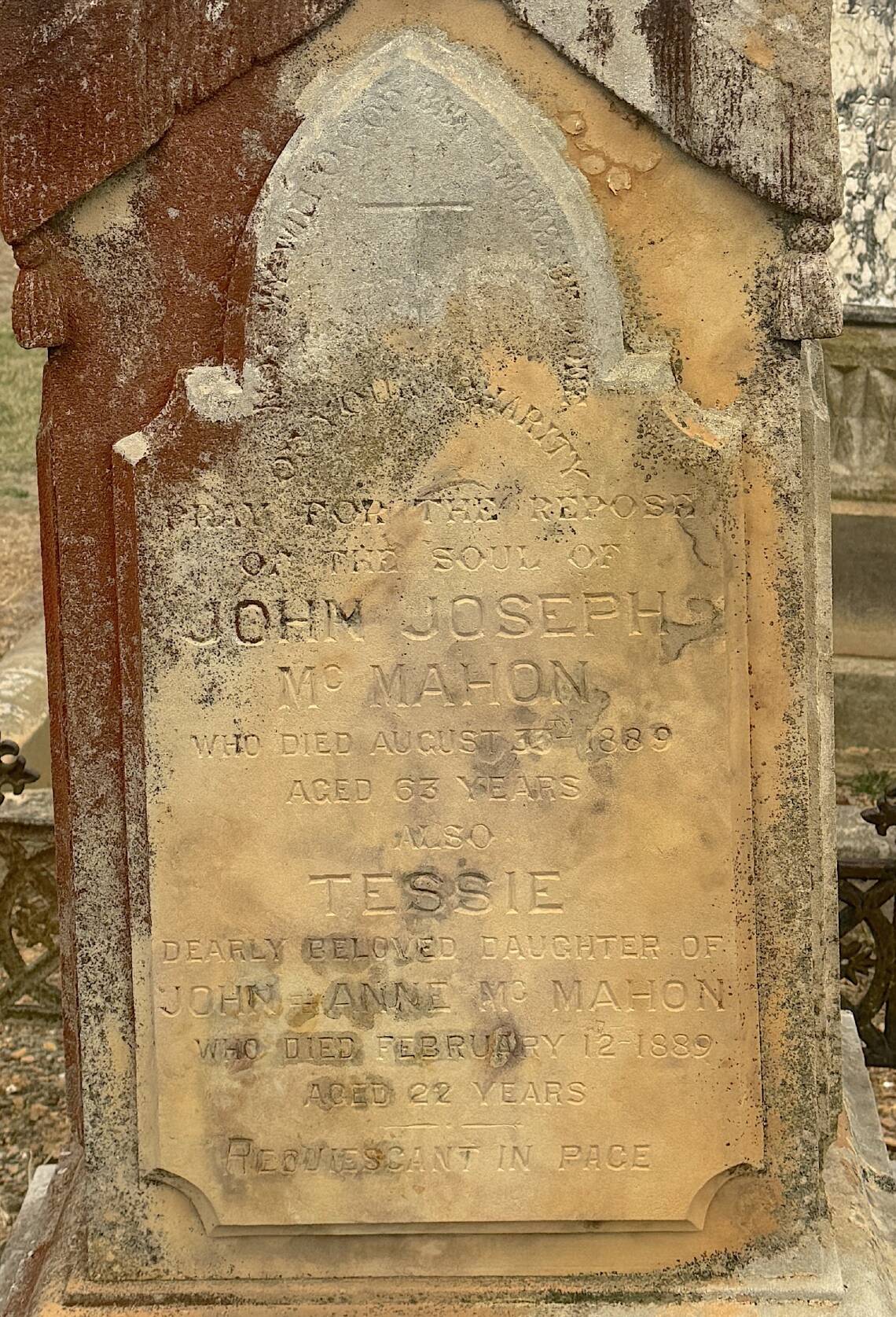
But if you look closely, you'll notice that although Jack died on August 31, the engraving on his grave reads August 33th.
This begs two questions. Firstly, why the 'th'? Surely, if such a date existed it would be 33rd.
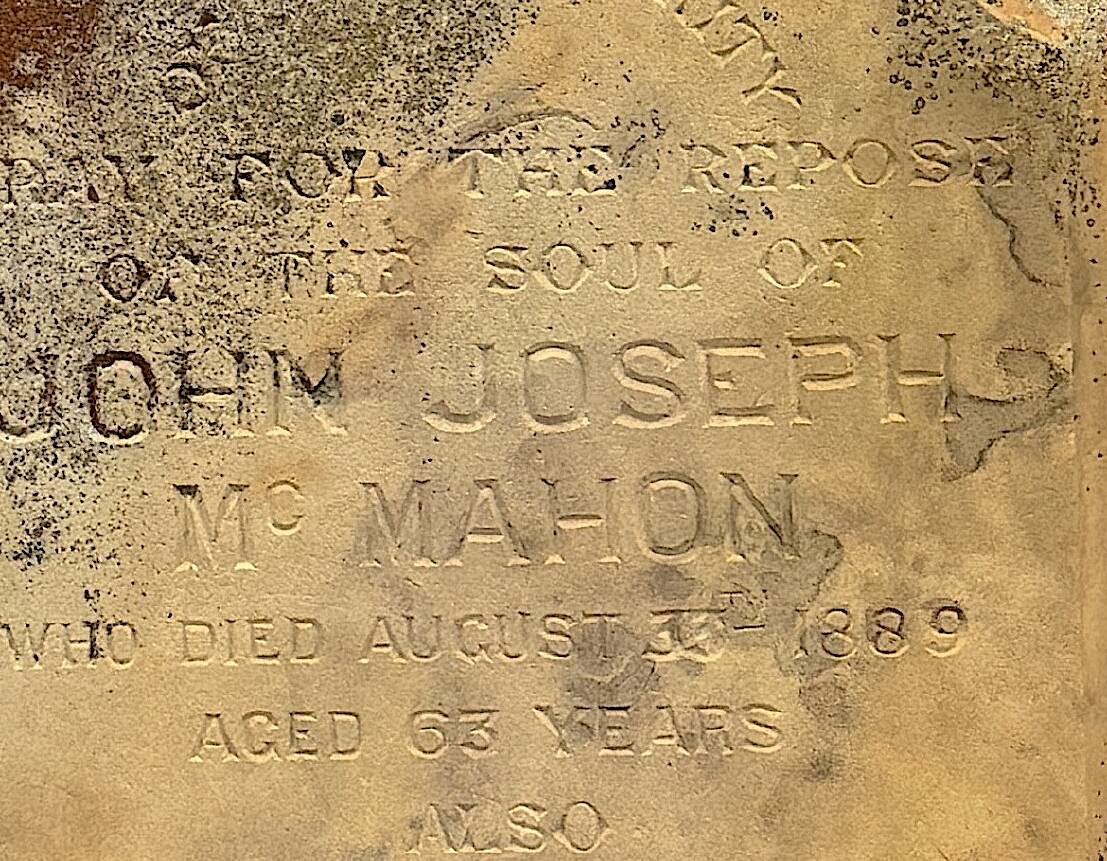
But the bigger question is why the 33th at all?
Some suggest his date of death was "changed" at his family's request and that 33 means that heaven has sent a message that you have "run out of fuel". Others claim it was merely an error. We may never really know.
WHERE IN CANBERRA?
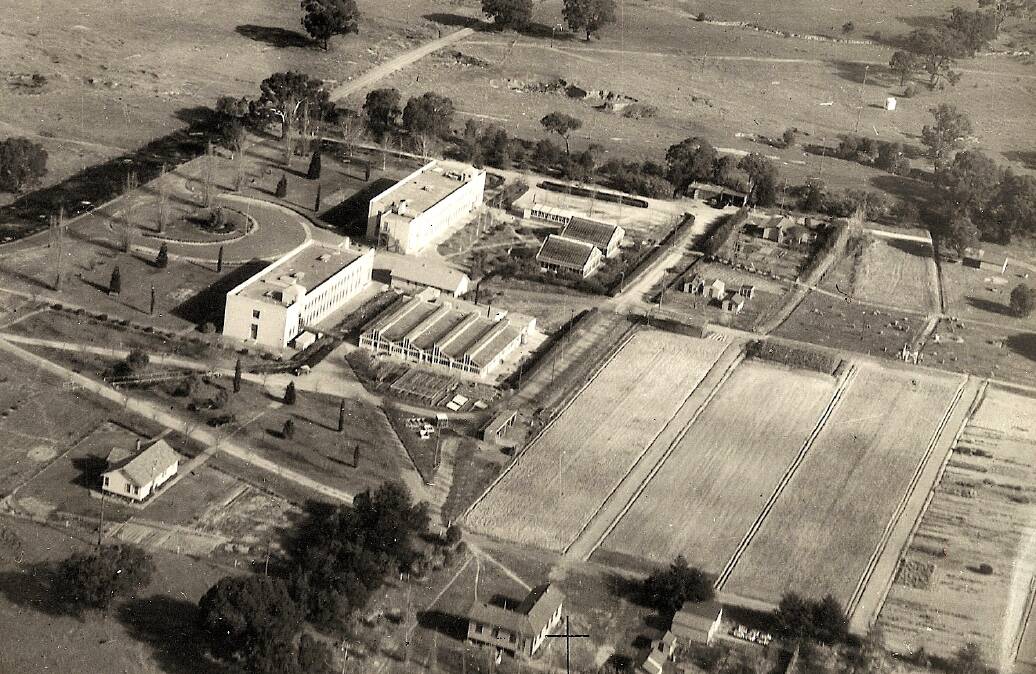
Rating: Easy - Medium
Clue: circa 1944
How to enter: Email your guess along with your name and address to tym@iinet.net.au. The first correct email sent after 10am, Saturday April 13 wins a double pass to Dendy, the Home of Quality Cinema.
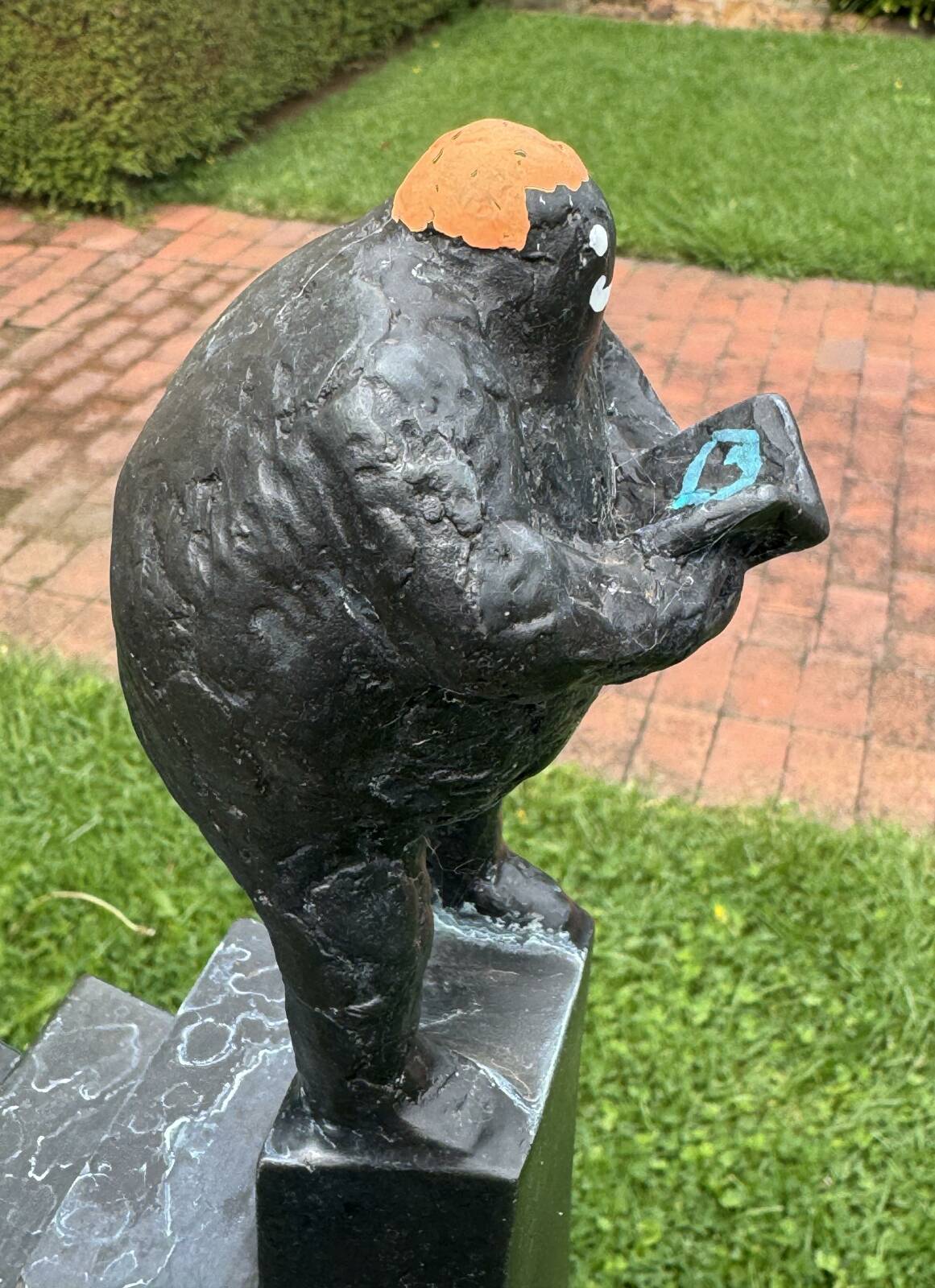
Last week: Congratulations to first-time winner Annie Termaat of Ainslie who was first to correctly identify last week's photo as part of the On the Staircase sculpture by Keld Moseholm located at Gorman House (which marks it centenary this year, hence the clue of "100"). Annie just beat many readers, including Tim Johnston of Braddon and Penny Jurkiewicz of Wanniassa, to the prize. Meanwhile, Steve Leahy of Macquarie was one of several readers to point out that following years of vandalism in Petrie Plaza where it was first installed in 2009, the sculpture was moved to Gorman House in 2015.
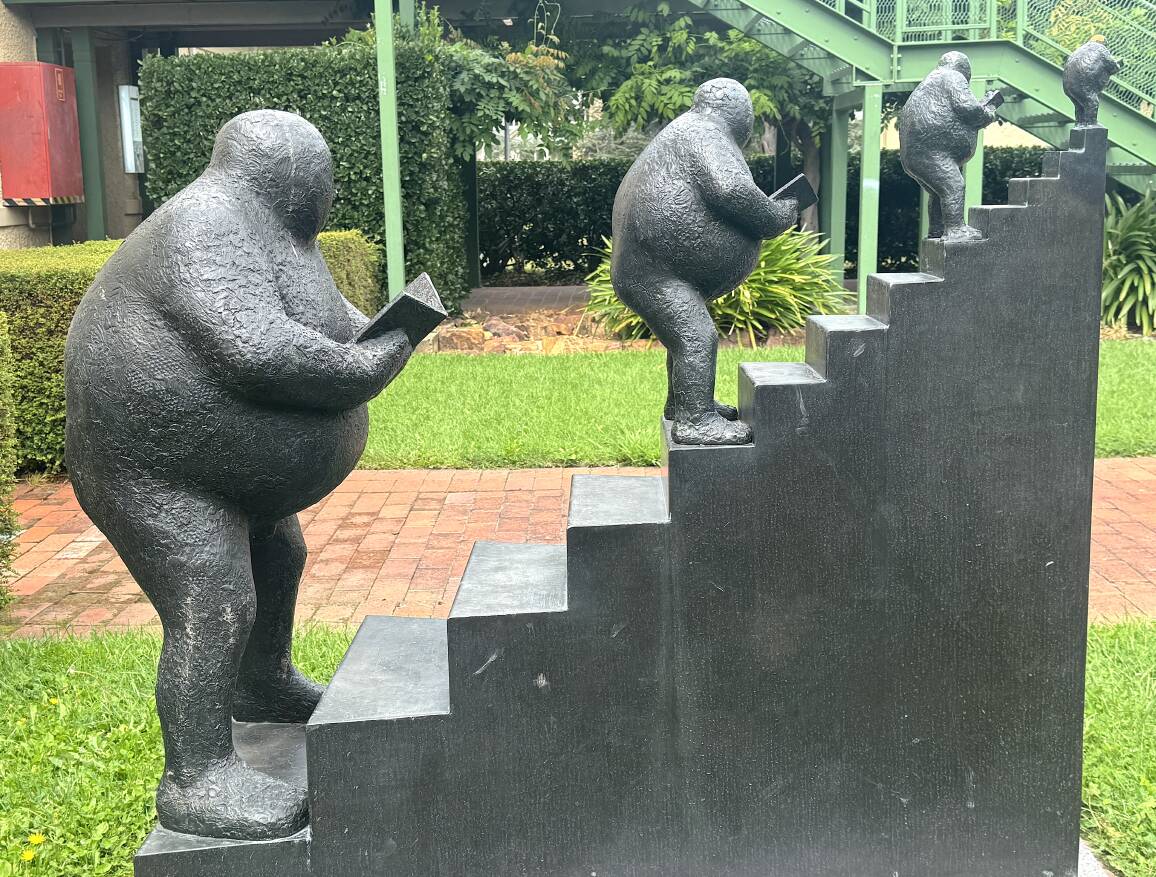
The complete sculpture contrasts four humans with the architectural weight of an oversized staircase. According to the artist, "the artwork has a philosophical aspect by reflecting on the effect of reading on the spirit - the more I read, the smaller I feel."
MYSTERY OBJECT
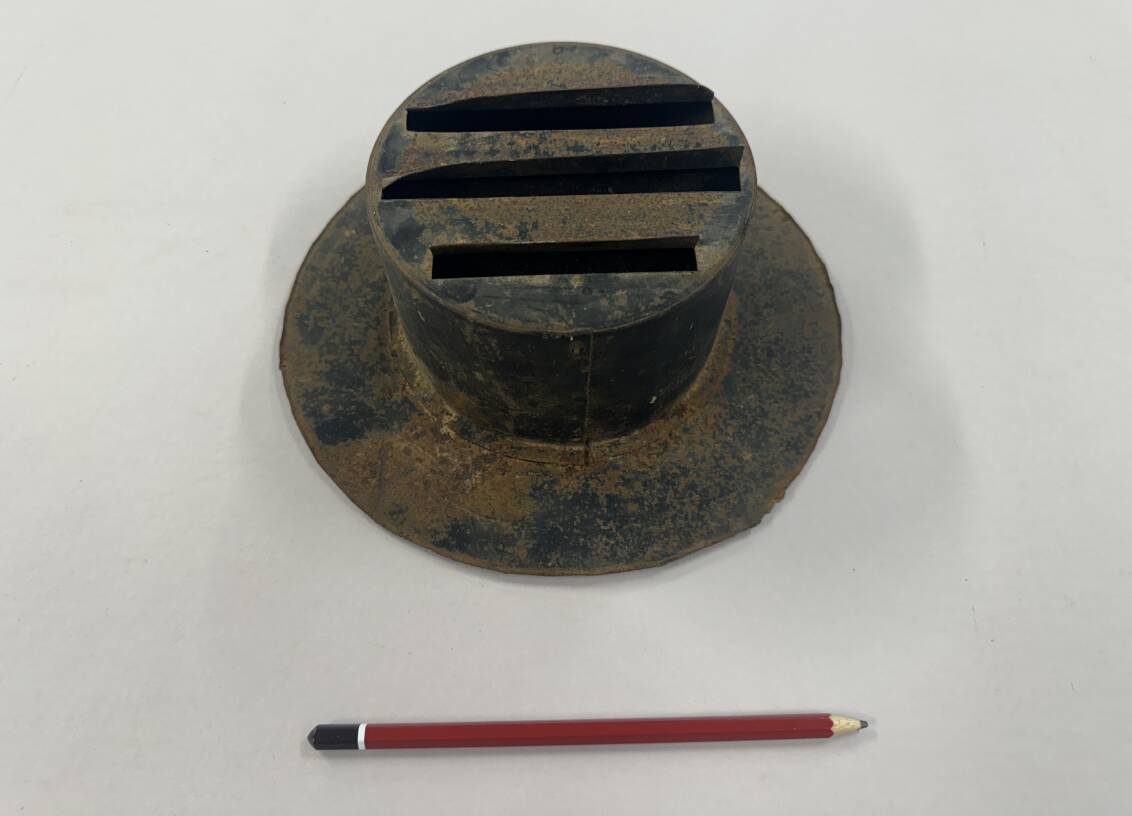
Several readers including Glen Knight of Narrabundah and Barry Miller of Isabella Plains recognised last week's mystery object that features in the new exhibition at Hall Heritage Centre (Sundays, noon to 4pm) as a headlight dimmer used during the compulsory blackouts of World War II. Meanwhile, Patrick Jeffery of Jerrabomberra reports he has a new set of headlight dimmers given to his father, Victor Jeffery, in the 1940s for his 1927 Pontiac sedan. For several years Patrick has displayed the "priceless pair" of headlight dimmers at the annual Tidbinbilla Pioneers Association (TPA) exhibition at the Tidbinbilla Nature Reserve "and in that time could not find a single visitor who knew what they were". This year, the TPA exhibition will be at Namadgi Visitors Centre until the end of May 2024.
- CONTACT TIM: Email: tym@iinet.net.au or Twitter: @TimYowie or write c/- The Canberra Times, GPO Box 606, Civic, ACT, 2601







